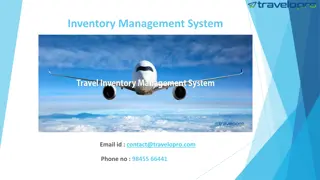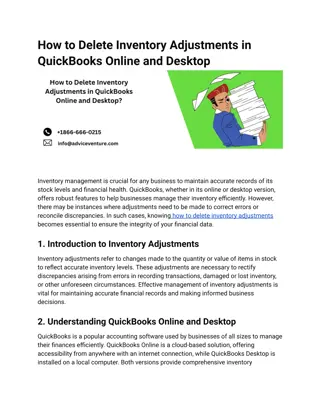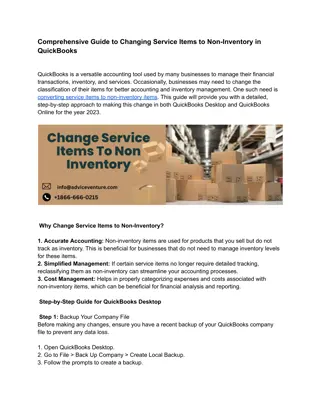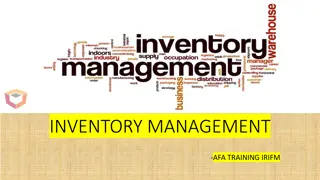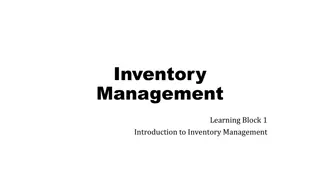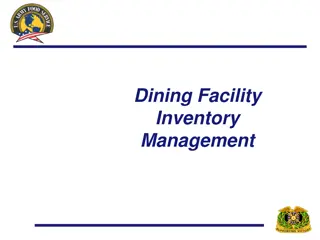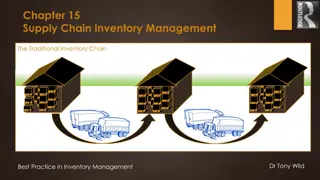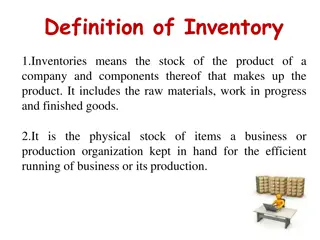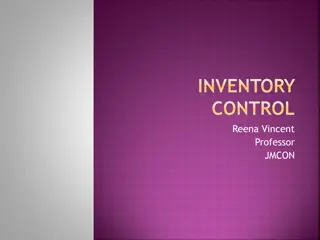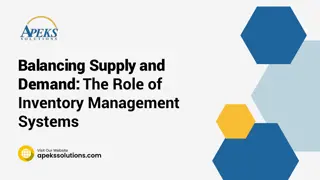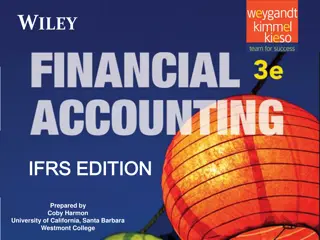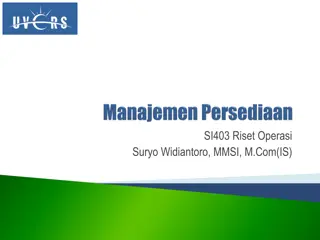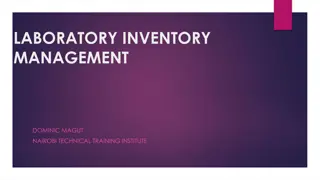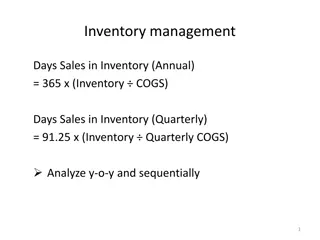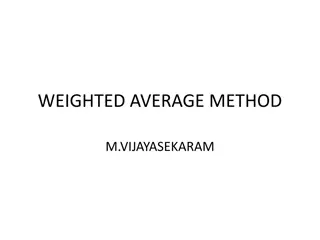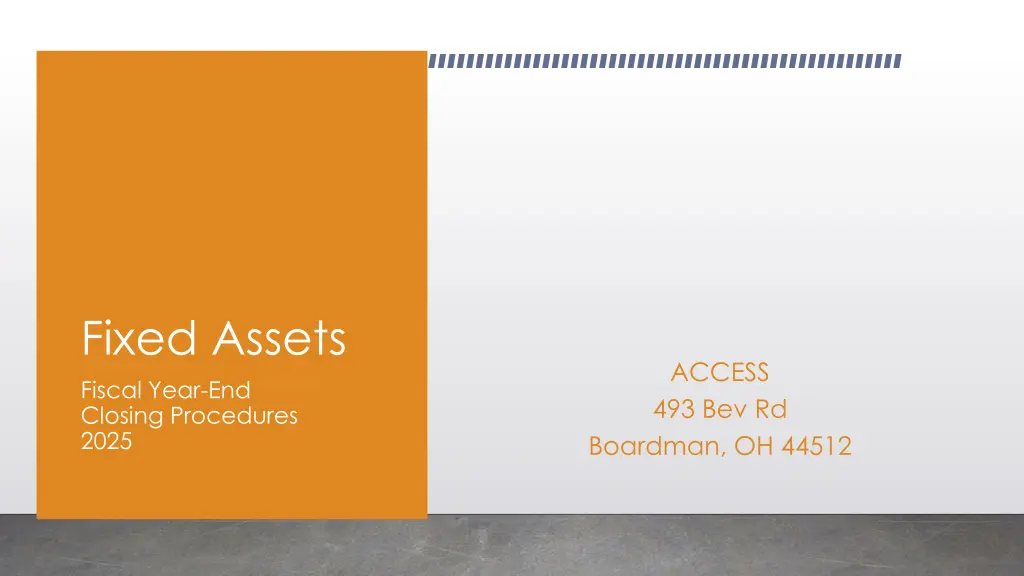
Year-End Closing Procedures for Fixed Assets 2025
Learn about the essential pre-closing procedures for fixed assets at the fiscal year-end in 2025. Find out how to handle items received, depreciation calculations, capitalization thresholds, item organization, and fund categorization.
Download Presentation

Please find below an Image/Link to download the presentation.
The content on the website is provided AS IS for your information and personal use only. It may not be sold, licensed, or shared on other websites without obtaining consent from the author. If you encounter any issues during the download, it is possible that the publisher has removed the file from their server.
You are allowed to download the files provided on this website for personal or commercial use, subject to the condition that they are used lawfully. All files are the property of their respective owners.
The content on the website is provided AS IS for your information and personal use only. It may not be sold, licensed, or shared on other websites without obtaining consent from the author.
E N D
Presentation Transcript
Fixed Assets Fiscal Year-End Closing Procedures 2025 ACCESS 493 Bev Rd Boardman, OH 44512
2 Pre-Closing Procedures Items received on or prior to June 30th, 2025 should be added to Inventory for FY2025 Items received after June 30th can be added to the pending file for FY2026 If depreciation has been changed on several items so that it s necessary to completely recalculate the life-to-date (LTD) depreciation, you may select the desired items from the Items grid and select Depreciate NOTE: Recalculating depreciation will affect items that have had improvements (additional acquisitions added throughout the life of the item) causing items to lose their true depreciation history. Please refer to the Depreciation chapter in the Appendix or Depreciation Adjustments section of Items for further information on the depreciate option
3 Pre-Closing Procedures Ensure items that meet or exceed the entity's capitalization threshold are marked as 'capitalized'. On the Items grid, add the 'capitalized' column and filter using their capitalization threshold. If there are items that meet the threshold criteria but are marked false under capitalized, these items need to be looked into further as to why they are not capitalized. For example: the entity has a dollar threshold of $5000 and a life expectancy of 1 year.
4 Item Organization Item Groups Each item is designated a Fund, Function, and Asset Class These groupings are used to sort and group items on reports in the software Fund Function Asset Class
5 Item Organization Core Menu The different options for each of these groups is defined in the Core menu. These are configured by the district so the setup and details will vary
6 Item Organization Core > Funds Funds are used to define the item's current fund for which an item is currently being used. The fund code is not necessarily the source from which the item was purchased. The Fund code is also attached to a fund Type: Governmental, Proprietary, Fiduciary Source vs. Fund Code Each item will only be linked to ONE fund code, regardless of how many acquisitions it could have been purchased from Most reports that sort by Fund are using the fund code from the item Exceptions to this are reports that reference Source Source reports will look at the acquisition account code from the PO
7 Item Amounts Original Cost The cost of the item as given on the purchase order(s) or the sum of all acquisition amounts for the tag number. This cannot be manually changed, this will always be the total of the existing acquisitions Part of what determines the Capitalization of the item LTD Depreciation The Life-to-date depreciation. This is the total amount of depreciation for the item from the beginning depreciation date until the last fiscal year closed.
8 Fiscal Year-End Closing Procedures When all assets have been entered for the FY, district can run the recommended list of reports (this includes all necessary GAAP reports if GAAP is enabled for the entity). All recommended FYE reports are explained in the upcoming slides.
9 GAAP Reports GAAP Reports All GAAP reports are canned reports and are located under the Reports menu. They are generated in PDF format only. The reports contain separate sections for each fund type (governmental, proprietary, fiduciary). GAAP reports only show Items that meet certain criteria
10 GAAP Reports Fixed Assets by Source ..summary of the original cost of capitalized items by their source (or fund) the items were charged to on the purchase order Source means the fund the items were originally charged to when purchased uses the PO information from the acquisition record to identify the source fund used in purchasing the items. Report Filename: FixedAssetBySourceReport.pdf
11 GAAP Reports Fixed Asset by Function and Class .schedule of fixed assets by function and class. May generate up to three different report formats: Schedule by Function & Class - displays original cost & book value Schedule by Class - displays original cost & book value Summary by Function and Class - choose to summarize by 2-digit function and may report on original cost or book value For FYE, it is recommended to generate the report for all three formats Book Value is the Original Cost minus Total Depreciation Report Filename: FixedAssetByFuncClassReport.pdf
12 GAAP Reports Schedule of Change in Fixed Assets Contains changes in capital assets during the current fiscal year Ability to generate a summary or detail report Ability to generate the report by asset class, fund or function. For FYE, it is recommended to generate the report for all three types Report Name: ScheduleOfChangeReport.pdf Summary report lists the beginning balance, acquisitions, dispositions, transfers in/out, adjustments and the ending balance in column format. Detailed report lists individual tags that make up the acquisitions, dispositions, transfers, or adjustments amounts that happened in the year.
14 GAAP Reports Totals on the Fixed Assets by Source Fixed Asset by Function and Class Schedule of Change in Fixed Assets Original Cost amounts should match when balancing out for the fiscal year-end.
15 GAAP Reports Schedule of Changes in Depreciation Contains changes in depreciation of capital assets during the current fiscal year Ability to generate a summary or detail report Ability to generate the report by asset class, fund or function For FYE, it is recommended to generate the report for all three types Report Name: ScheduleOfChangeInDepreciationReport.pdf Summary report lists the beginning depreciation, continuing items, acquisitions, dispositions, transfers, adjustments and ending depreciation balance in column format. Detailed report lists individual tags that make up the acquisitions, dispositions, transfers or adjustment amounts.
17 Suggested Non-GAAP Reports Asset Listing by Grant/Source .listing of acquisition transaction data by source account code and/or grant identifier Brief Asset Listing .. brief listing (one line per item) of all assets or a subset of them. Recommended 5 versions of the Brief Asset generated at FYE Include capitalized items only and Status codes of Active, New, Excess Asset Held for Sale, and Excess Asset Not in Use (with the exception of the disposition report) Brief Asset Listing by fund Brief Asset Listing by function Brief Asset Listing by asset class Acquisitions for current fiscal year Dispositions for current fiscal year
18 Suggested Non-GAAP Reports Book Value Report ..displays depreciation information listing original cost, salvage value, book value, % of depreciation, and last year of useful life. The current FY is used for the reporting date. Recommended 4 versions generated at FYE Include capitalized items only and Status codes of Active, New, Excess Asset Held for Sale, and Excess Asset Not in Use (with the exception of the disposition reports below). Book Value Report by function Book Value Report by class Depreciation for current FY dispositions by function Depreciation for current FY dispositions by class
19 Suggested Non-GAAP Reports Audit Report tracks changes made in the application Depreciation PostingReport contains the projected FTD depreciation and Book Value amounts, sorted and subtotaled by asset fund with a grand total at the bottom of the report Fiscal Year Ending BalancesReport contains the projected ending (original cost) balances for the current fiscal year (displayed in 'Current Fiscal Year' field)
20 Fiscal Year-End Closing Procedure Close the current fiscal year by clicking the Close Icon in Core>Fiscal Years Advances Last Closed Fiscal Year date in Core>Configuration by one year Adds one year s worth of depreciation to LTD depreciation field Updates beginning balance fields for new FY on the item record Generates Inventory FYE Bundle Generates the necessary reports and sends them to Document Storage
21 FYE Bundle Document Storage page is not currently visible. Will be added to the System menu when Document Store is released Will be visible to users with INV_STANDARD or higher level access FYE Bundle zip file will no longer be emailed. Document Storage is anticipated to be released June 2025. If the fiscal year is closed prior to Document Store being available, a FYE bundle will be generated and sent to the email in Core > Configuration. Initial implementation will not include option to import previous FY reports but is planned for a future update
22 Fiscal Year-End Closing Procedure In Core>Fiscal Years, create FY2026, open the year and make it current to start processing inventory for the new year If GAAP flag is not enabled and the district would like to start on GAAP for the next fiscal year, please contact ACCESS Once enabled, district may then start entering inventory for the new fiscal year
23 Questions?



